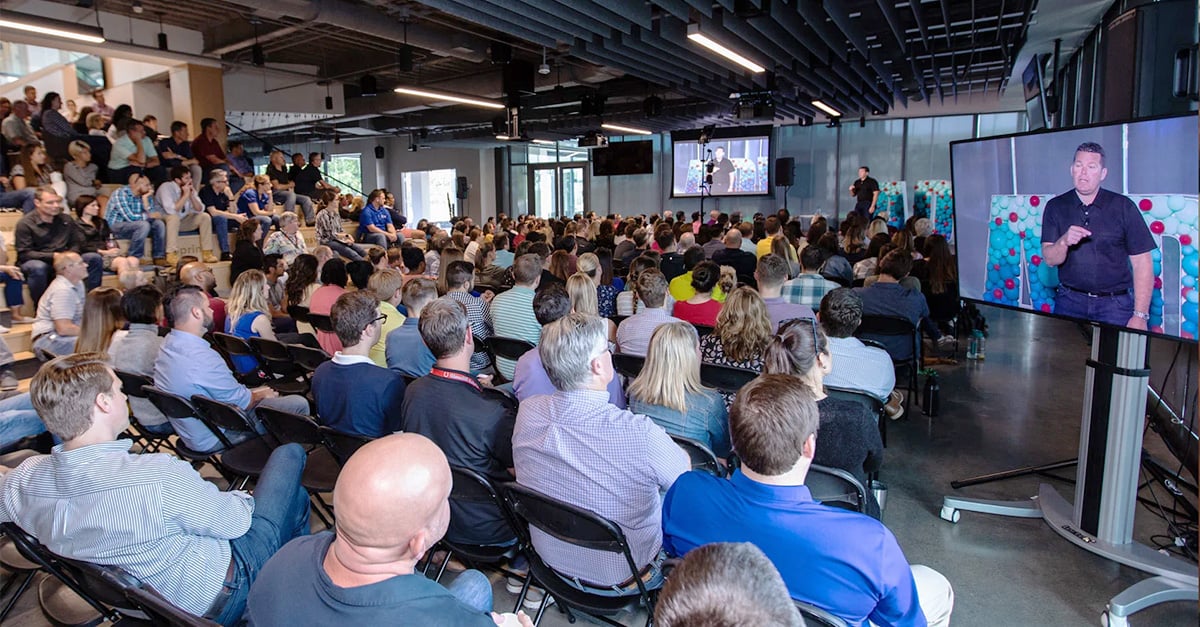I am often sought after when a team, company, or organization finds themselves stuck in a rut. A carefully crafted keynote can spark transformation and empower individuals to uncover their hidden capabilities, turning struggles into strengths.
Through keynotes, team building activities, breakout sessions, workshops, coaching, and courses, my goal is to inspire others to surpass their original expectations. I embrace the term "Unstoppable" because it is in overcoming moments of being stopped that true resilience is found.
Smooth seas do not make skillful sailors, and every team will face challenges and obstacles. That is why it is crucial to regularly integrate team building activities into your routine. These activities can help break down barriers, build trust, improve communication, and foster stronger relationships within the team.
I find it effective to employ acronyms to aid both my audience and me in recalling essential aspects of team building activities. For instance, I use CLEAR to address conflicts, LISTEN to foster understanding, and INSPIRE to motivate action. This approach enhances comprehension and facilitates the application of these principles.
Each keynote is unique, just like every team, company, or organization and the challenges they face. I customize each presentation to meet the specific needs and objectives of my clients, ensuring a tailored and impactful experience.
With that being said, I would like to provide you with further insight into how these tools can be applied to various needs. The goal is to assist you in understanding how they may be relevant to your own circumstances.
Overcoming Conflict
Example #1: One of the largest public steel companies in the United States hired me to deliver a company-wide keynote and executive team workshop. Additionally, they requested my assistance in enhancing the performance of their plant leaders, both executives and union employees. The team was struggling due to constant conflicts and a lack of effective communication. Unfortunately, biases and judgments had hindered their ability to truly listen to one another, resulting in shouting matches and disrespectful name-calling. To address these challenges, I decided to focus on improving communication between the union and executive members. To achieve this, I introduced them to a framework I had developed over the years called CLEAR, which has proven to enhance team performance by facilitating better communication.
CLEAR conflict by embracing it. Embracing conflict aims to cultivate a collective mindset within teams, marked by a shared purpose that transcends differences. It involves a selfless attitude that supports the success of others, a genuine respect for the expertise of team members, a willingness to forgo seeking credit or placing blame, and a commitment to building trust and respect in relationships. The memory aid is CLEAR:
- C—Clarify Intent: encourages open communication and productive discussions. The initiator expresses the need for clarity while recognizing the importance of maintaining a good relationship with the receiver.
- L—List Facts: presents different perceptions of the facts, providing insight into varying viewpoints. The initiator should maintain a respectful and unemotional tone.
- E—Express Emotions: the initiator shares the emotional impact of the situation, helping the receiver understand the consequences from their perspective.
- A—Acknowledge Emotions: the receiver restates the initiator's facts and emotions, validating their feelings and demonstrating understanding.
- R—Respond Respectfully: the receiver explains their intentions and actions, offering their own perspective. The conversation concludes when the initiator feels their concerns have been addressed, stating "I am clear with you." This process strengthens relationships and enhances team synergy.
Overall, the CLEAR approach fosters open, respectful conversations, enabling teams to address and resolve conflicts effectively, which in turn leads to stronger, more resilient relationships and improved team performance. Within this steel manufacturing company, many leaders harbored suppressed emotions and outdated judgments. These emotional and judgmental barriers hindered their ability to trust one another. To address this issue, I implemented the CLEAR process, which allowed individuals to release their frustrations, share their judgments, and express their emotions. As a result, a newfound trust began to emerge between executive and union employees, opening the door for collaboration and mutual reliance.
Example #2: In addition to the example of my work with a steel company, I have successfully applied this adaptable and effective approach in various scenarios and industries. For instance, I encountered a situation where a major software corporation's senior management team was facing challenges in executing a strategic shift due to internal resistance. To address this, I used the CLEAR framework during individual coaching sessions with the members of the senior management team, allowing them to openly express their concerns and apprehensions regarding the strategic changes. This created an environment of constructive dialogue, leading to smoother execution of the new strategy and ultimately resulting in improved business outcomes. By fostering a supportive and collaborative atmosphere, we were able to overcome the initial resistance and create a positive impact on the entire corporate community.
The Science Behind My Approach
The CLEAR method of conflict resolution aligns with numerous psychological and social theories. I emphasize this because I aim not only to inform you about my approach but also to demonstrate its effectiveness and illustrate how it can benefit you.
According to the Social Exchange Theory, human relationships form through a subjective evaluation of costs and benefits, as well as comparisons with alternatives. In the context of the CLEAR method, individuals engage in a cost-benefit analysis by clarifying their intentions and listing facts, thereby considering potential conversation outcomes.
Emotional Intelligence Theory emphasizes the ability to recognize and manage one's own emotions, as well as the emotions of others. The CLEAR method's steps of Express Emotions and Acknowledge Emotions clearly align with this theory, promoting understanding and emotional management in conflict resolution.
Active Listening Theory, a communication technique used in counseling, training, and conflict resolution, requires complete concentration, understanding, responsive engagement, and retention of information. The CLEAR method reflects this theory through its steps of Acknowledge Emotions and Respond Respectfully.
The Thomas-Kilmann Conflict Mode Instrument (TKI) identifies an individual's behavior in conflict situations based on assertiveness and cooperativeness. The CLEAR method encourages a collaborative approach, which reflects high levels of both assertiveness and cooperativeness.
Transactional Analysis Theory explores individuals' interactions and behaviors, based on the concept of three ego states: Parent, Adult, and Child. The CLEAR method promotes communication from the 'Adult' ego state, focusing on facts, acknowledging emotions, and expressing them without blame or judgment.
Beyond the Keynote
After the opening or closing keynote speaker ends, the next step is crucial. Providing post-keynote support or follow-up strategies not only reassures my clients but also ensures that they receive continued guidance and assistance beyond the event. This ongoing support fosters long-lasting relationships and helps clients implement the insights gained from the keynote or workshop effectively. It demonstrates a commitment to their success and cultivates a sense of trust and partnership. So, I make sure to go the extra mile and offer comprehensive support to leave a lasting impact on my clients.

